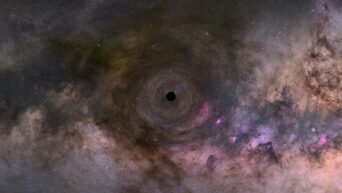Neutrinos are one of the rarest and trickiest particles in the universe. They’re constantly flying around the stars, bombarding planets with unusual energy similar to what is emanated from the Large Hadron Collider. Because they’re moving around so much, they’re very difficult to pin down, and as such, we have no way of determining where (or what) they’re coming from. An ambitious new telescope proposed by the astronomy community may just have the neutrinos’ number.
The Giant Radio Array for Neutrino Detection, or GRAND (give ’em bonus points for the excellent acronym), would utilize a network of over 200,000 radio receivers placed all around the world to create a detection radius about the size of Nebraska. This radius would be incredibly precise compared to previous telescopes, and could be used not only to detect neutrinos, but map the universe based on their presence. If the GRAND works as intended, we could learn not just about neutrinos, but the high-level energies that they comprise, such as cosmic rays and gamma rays appearing from space.
The GRAND is still in its proposal stages, with about 10,000 of its receivers planned to be deployed in the Tian Shan Mountains in China by 2025, followed by 20 times that amount by 2030. It’s gonna be a while before the GRAND can be realized (and it’ll cost quite a bit), but if we can get it to work, we could glean a whole new level of knowledge about our universe.
































